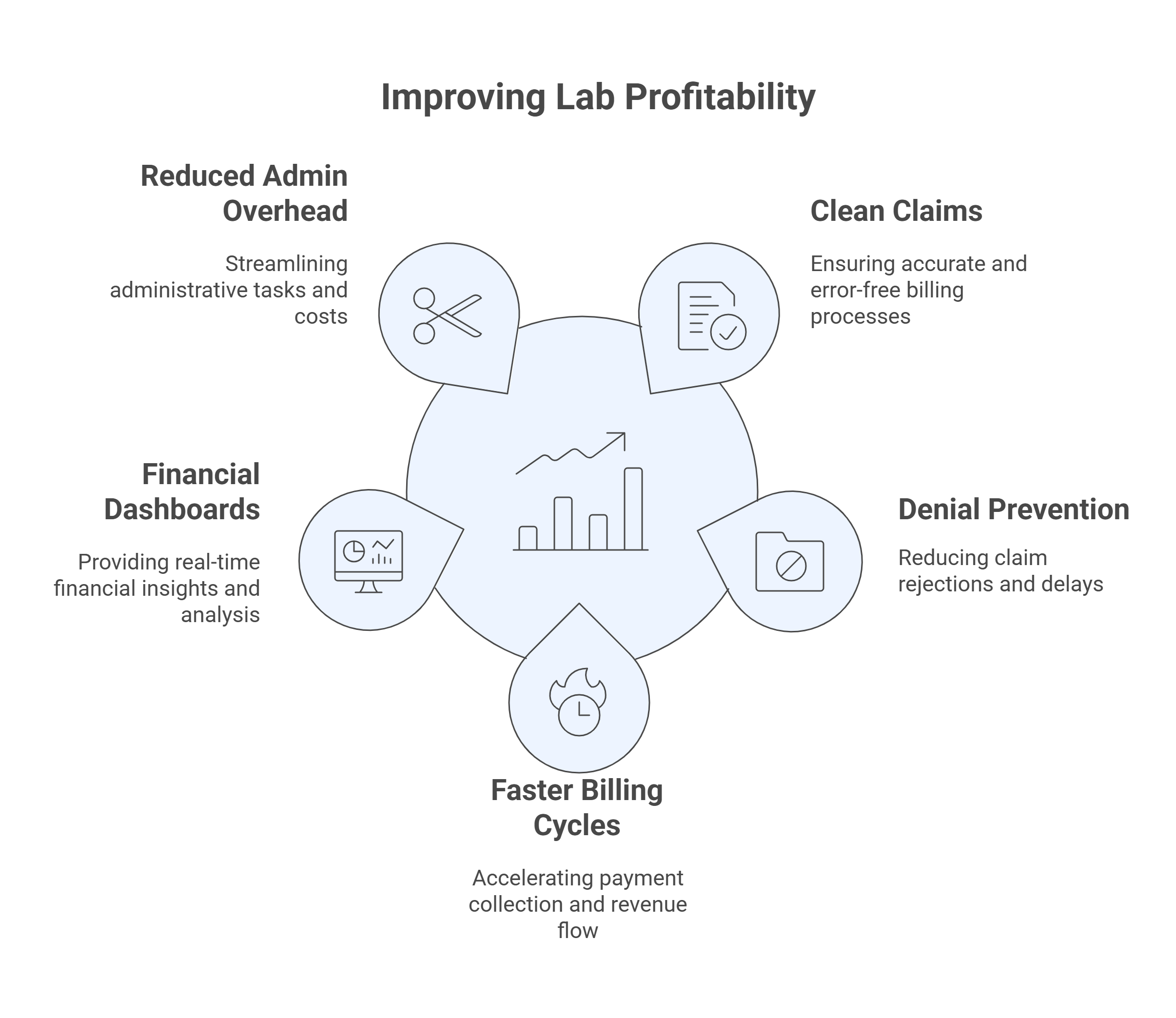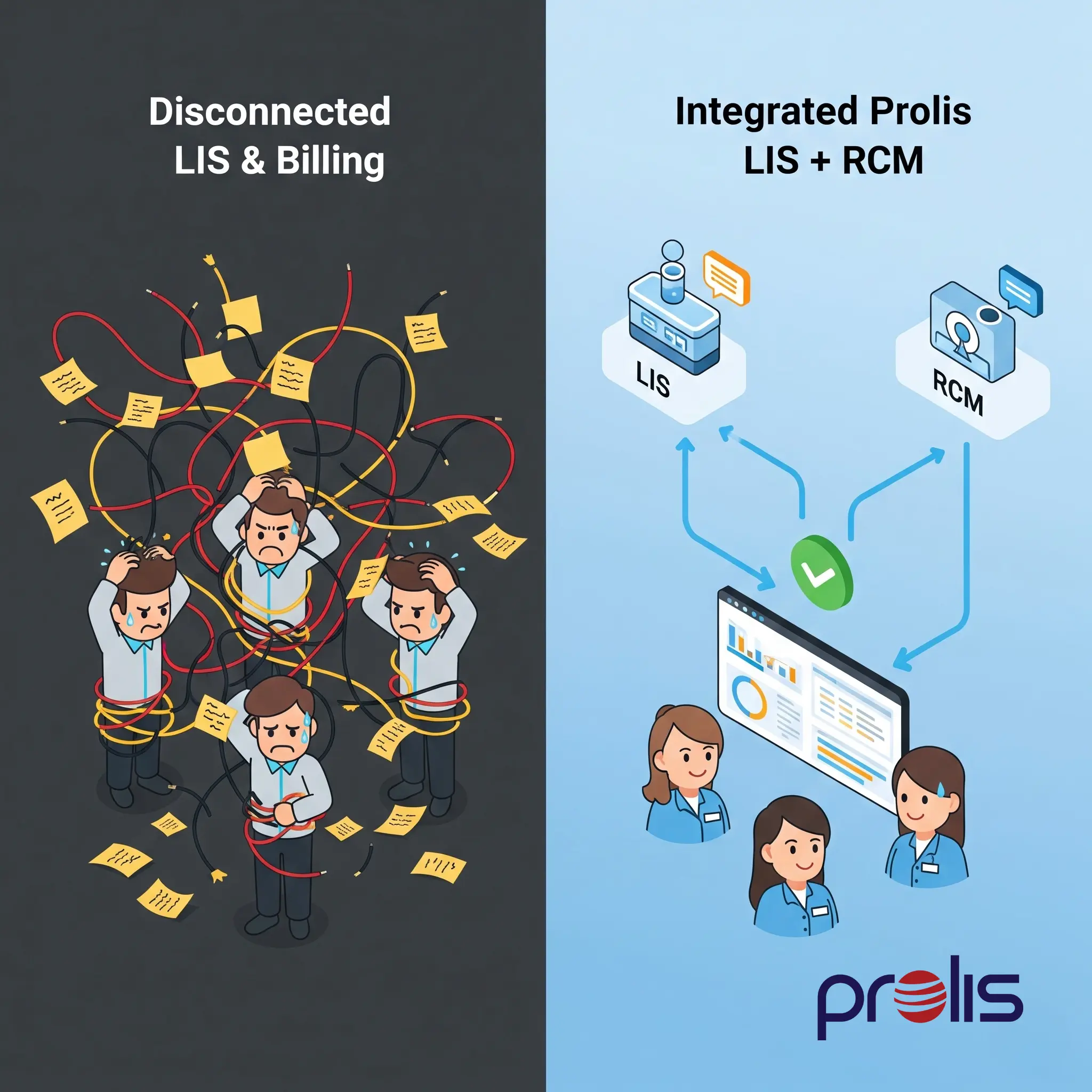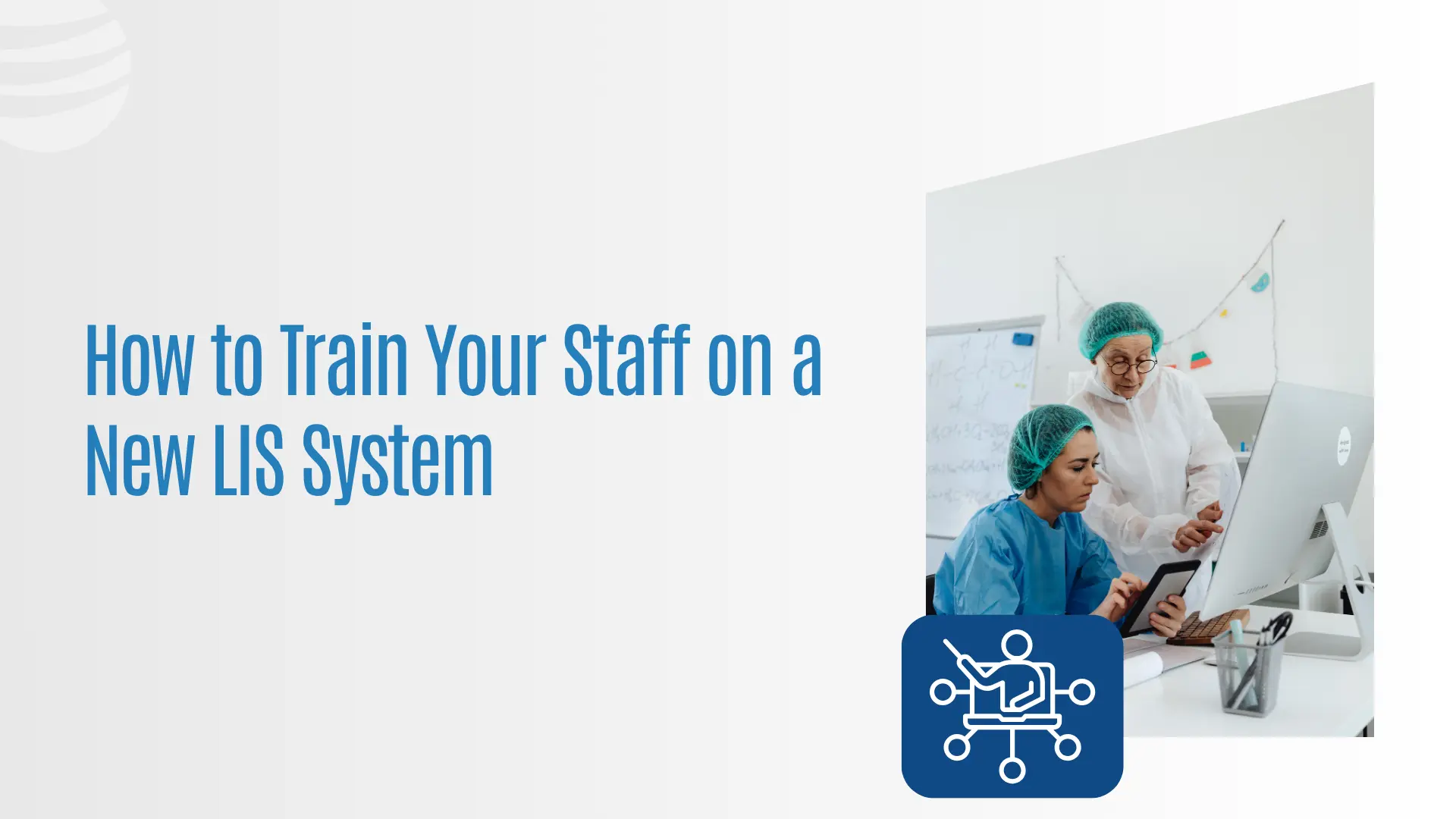How Integrated LIS & RCM Systems Improve Lab Profitability
Why Integration Is the Key to Sustainable Lab Revenue
Laboratories don’t just process specimens they process transactions. Every test performed must ultimately be billed, tracked, and reimbursed. But for many labs, revenue leakage, billing delays, and claim denials remain daily challenges.
The root problem? Disconnected systems. Most laboratories use one system to run operations (LIS) and a separate, poorly integrated one for billing (RCM). The result is siloed data, manual handoffs, and lost revenue opportunities.
In 2025, profitable labs are the ones that integrate their Laboratory Information System (LIS) with their Revenue Cycle Management (RCM) solution. This blog breaks down how that integration works and why it directly improves cash flow, compliance, and long-term growth.
What Is LIS-RCM Integration?
At a high level, LIS-RCM integration connects two critical systems:
LIS (Laboratory Information System): Manages test ordering, specimen tracking, result reporting, and lab operations
RCM (Revenue Cycle Management): Handles billing workflows including claim generation, payer rules, denials, and AR tracking
Integration means that these systems share data automatically, eliminating duplication, and reducing billing errors. With integration, labs move from fragmented transactions to streamlined, revenue-generating workflows.
Problem With Disconnected Systems
Most labs still operate with siloed LIS and billing platforms. As a result, they face:
- Manual data re-entry between systems
- Mismatch between test performed and CPT billed
- Delayed billing due to unfinalized results or missing data
- Claim denials caused by incomplete or inaccurate information
- Limited visibility into billing performance by test, provider, or payer
Disconnection = inefficiency. And inefficiency kills profitability.
5 Ways Integration Directly Improves Lab Profitability
1. Cleaner Claims = Faster Reimbursement
Integrated systems ensure that billing data is pulled directly from LIS workflows meaning fewer errors and omissions.
✅ Patient demographics, test codes, ordering provider info, and CPT codes are auto-populated
✅ Claims can be submitted as soon as results are finalized
✅ Cleaner claims = fewer rejections and appeals
Financial Impact:
-
- Reduced days in AR
- Fewer staff hours spent on reworking claims
- Improved revenue predictability
2. Fewer Denials Through Payer Rule Logic
Many RCM systems include a payer rules engine but it only works if the right data flows into it from the LIS.
Integration allows labs to:
-
- Run pre-billing checks based on test type, diagnosis codes, and payer-specific criteria
- Flag issues before claim submission
- Prevent known rejections (e.g., missing prior authorization, diagnosis mismatch)
Outcome: Denials go down. Revenue goes up.
3. Real-Time Triggers Accelerate the Revenue Cycle
In disconnected systems, billing is delayed until staff manually trigger the process. With integration, the LIS initiates billing automatically when predefined conditions are met:
-
- Sample received
- Test verified
- Result released
These real-time triggers allow for:
-
- Instant claim generation
- Automated eligibility checks
- Early notification of billing exceptions
The result is a shorter revenue cycle, reduced cash flow gaps, and faster collections.
4. Integrated AR Dashboards for Financial Clarity
When LIS and RCM systems are connected, labs gain visibility into financial performance by test, payer, or provider.
Examples:
-
- Which tests are most profitable?
- Which payers are slowest to pay?
- Which clients have the highest rejection rate?
With an integrated dashboard, labs can monitor performance in real time and act fast.
Outcome: Better financial decisions and stronger profit margins.
5. Reduced Administrative Overhead
Labs waste countless hours reconciling LIS and billing data manually.
Integration removes duplication by:
-
- Eliminating redundant entry across systems
- Auto-matching claims to test events
- Simplifying follow-up tasks and appeals
This allows lean billing teams to handle more volume, more accurately without more headcount.
Outcome: Lower operational costs and higher billing efficiency.
Compliance Advantage: Integration Reduces Risk
Profitability is not just about revenue it’s about protecting it.
Disconnected systems increase compliance risks:
- Inconsistent billing documentation
- Missing audit trails for tests billed
- Violations of payer billing rules
- Breaches of HIPAA data handling standards
An integrated LIS-RCM platform like Prolis:
- Maintains a full digital chain of custody from order to invoice
- Creates timestamped audit logs for every billed test
- Encrypts data across systems in compliance with regulatory standards
The result: cleaner billing, less regulatory exposure, and a stronger reputation with payers.
Why Prolis + RCM Is Built for Lab Profitability
Prolis offers a fully integrated LIS-RCM platform, designed to:
- Eliminate manual billing tasks
- Embed payer rule logic directly into workflows
- Provide real-time visibility into financials
- Improve first-pass claim acceptance
- Align operational metrics with revenue performance
Whether you’re a startup toxicology lab or a high-volume clinical lab, Prolis helps you optimize every transaction from order to payment.
Business Case for Integration
When labs integrate LIS and RCM, they:
- Collect revenue faster
- Capture more of what they bill
- Spend less per test on admin
- Reduce staff burnout
- Stay compliant without extra effort
More importantly, they build the financial infrastructure to scale adding tests, clients, and contracts without breaking operations.
Integrated Systems Build Profitable Labs
In today’s healthcare landscape, labs must move faster, bill cleaner, and scale smarter.
Integrating your LIS with your Lab RCM system isn’t just an IT decision. It’s a profitability strategy.
When operational data and billing logic live in one ecosystem, your lab moves from reaction to optimization and from manual catch-up to proactive growth.
With Prolis, that integration is built-in. The result? Labs that grow faster, collect more, and spend less doing it.






